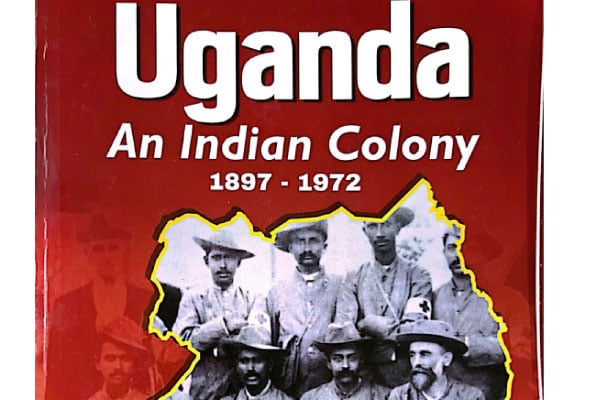Prime
Book Review: Making a case for expulsion of Asians

What you need to know:
- Most of the books, and articles written on the 1972 expulsion of Indians view the decision and its outcome from the perspective of the expelled Asian: the injustices they suffered, the start-afresh-condemnation they had to put up with, and desperation in finding new countries to call home.
By Godwin Toko
HISTORY
This year marks the 50th anniversary of President Idi Amin’s expulsion of Asians from Uganda. Several books have been authored, studies conducted, articles written, and disparate conclusions drawn from the said expulsion.
Most of the books, and articles written on the 1972 expulsion of Indians view the decision and its outcome from the perspective of the expelled Asian: the injustices they suffered, the start-afresh-condemnation they had to put up with, and desperation in finding new countries to call home.
This book does not. Instead, the author examines the subject from the perspective of the political questions of the day, and the circumstances that made the expulsion—even before Amin became president, a question of “when”, not “if”. In the end, the author defends, and justifies the decision.
Prof Samwiri Lwanga Lunyiigo meticulously examines the history of Indian settlement and penetration into east Africa, starting with the early trade and settlements on the island of Zanzibar as far back as 4th millennium BC. Describing the Indians as “the unsung heroes of British imperialism”, the author demonstrates how they were a key asset of the east African wing of the British colonial empire. The Indians, he demonstrates, played secondary administrative roles, some military roles, and—most importantly—took charge of the economy on behalf of their masters, the British.
Arguing that colonialism is primarily about economic control, the author writes that the Indians were in charge of the colonial enterprise in Uganda because they controlled the economy. This domination of the economy was noticed by the natives—as the author calls the indigenous Ugandans in the book.
In fact, since the natives interacted with the Asians, to whom they sold their farm produce such as cotton and coffee and from whom they bought commodities like salt and matchbox more, the natives saw the Asians more as the problem than they did white man. Cotton in particular, the author shows, was the bedrock on which the colonial economy rested and accounted for up to 64 percent of the country’s exports in 1950. The Asians, aided by the colonial government, strictly controlled the cotton supply chain. At the bottom was the natives who produced the cotton on their farms—primarily to pay taxes levied on them by the colonial administration and at the top. The ginning was a strict preserve for the Asians.
In 1908, compulsory labour (Kasanvu) was introduced to ensure more production of cotton by the natives. The author demonstrates how repeated attempts by the natives to break the economic glass ceiling were thwarted by the British colonial masters and their Asian cronies, leaving the natives more agitated and desperate. The farmers in Bagisu—through the Bugisu model—almost succeeded. In the end, they too were failed. Boldly, the author argues that Uganda only got independence in 1972—with the expulsion of the Asian by Idi Amin. Despite the Union Jack coming down, and the Black, Yellow, and Red striped Uganda flag taking its place, the author argues that the Indians—about fifty families in all—maintained their firm grip on the Ugandan economy and remained the colonial masters past 1962.
For comparison, the Uganda Development Cooperation, the largest parastatal in the country employing 23,981 had a gross turnover of Shs614.5 million while one Asian family, the Madhavani through its group of companies, raked in Shs467.3 million and employed 20,077 people in 1967.
So, while the Indians were a small percentage of the population, they controlled the economy in a significant way. Moreover, the Asians, given their influence and power, siphoned a lot of money from the economy and invested abroad, leaving the economy in shambles.
The authors hold that from the word go, Uganda’s independence leaders mooted plans to deal with the question of their place in Uganda. Kenya and Tanzania were taking similar steps to deal with the Indian question. The Prime Minister, Apollo Milton Obote hinted on the possibility of expelling the Asians, a window for citizenship was opened, yet many didn’t take up the opportunity.
In an address to parliament on 20 April 1970, Dr Apollo Milton Obote decried the mistreatment of natives by their Indian employees, further showing the magnitude of the issues his government was to address. For several reasons the author shows, Obote didn’t act. In the end, Amin, his replacement, did. The author shows that not all Asians were expelled. Some were since it was inevitable then yet compensation was made for those expelled.
The final chapter of the book examines the relationship between the Indian community and Ugandans today, and shows how circumstances today, on the economic front, are similar to those in the ’60/‘70s. It then invariably asks: Has Uganda seen the last of Asian expulsions? Time will tell. Great book!
Book title
Uganda: An Indian Colony 1897 – 1972
Author
Prof Samwiri Lwanga Lunyiigo
Pages
196
Price
Shs60,000
Where
Most bookshops in Kampala.




